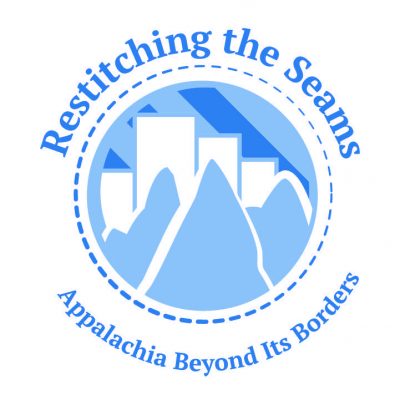Participation Type
Paper
Presentation #1 Title
“That’s just what all this made me think about”: towards addressing the storyteller trope in Central Appalachia
Presentation #1 Abstract or Summary
The trope of the Appalachian storyteller is well-known both in and outside of the region, so much so that it’s been internalized by Appalachians themselves as a cultural marker of regional identity. While it’s certainly true that Appalachia has a rich heritage of oral storytelling traditions, what is it about Appalachian storytelling that has resulted in the transregional spread of this stereotype?
This pilot study seeks to address the storyteller stereotype. Linguistic, sociocultural and discursive factors (Wolfram & Christian 1975, Wolfram & Christian 1976, Hazen & Fluharty 2004, Hazen et. al 2013, Montgomery 1999) used in the construction of oral personal narrative were identified and analyzed through discourse analysis and narrative studies. (Johnstone 2004) Data were collected from story circles, a methodology first implemented in cultural organizing spaces. The author posits that existing perceptions of Appalachians and their dialect yield stances that, combined with narrative structure and discourse markers, create a social language (Gee 2015) universally accepted by both Appalachians and non-Appalachians.
Preliminary data analysis using stance as a framework supports this hypothesis: stance-taking coupled with a stylistically unorthodox manner of recounting personal events ultimately falls back on larger perceptions of Appalachian English and of Appalachia as a speech community. Appalachian participants tended to violate Grice’s Maxims of Conversation (Grice 1975) and Elinor Ochs’ narrative lessons (Ochs 2004) by “patchworking” several variations on themes, anecdotes and snippets of personal narrative into a larger snapshot of the story at hand. In this way, Appalachian storytelling may evoke a stance of solidarity in an Appalachian listenership with highly relatable content and performance; at the same time, it may reinforce pre-existing perceptions of Appalachians as unintelligent yet endearing (Luhman 1990) in a non-Appalachian listenership.
References
Gee, James. “Discourse analysis: stories go to school.” Social linguistics and
literacies: Ideology in discourses. 130-149. Routledge, 2015.
Grice, H. Paul. "Logic and conversation." 1975 (1975): 41-58.
Hazen, Kirk, Jaime Flesher, & Erin Simmons (2013). The Appalachian range: The
limits of language variation in West Virginia. In Clark & Hayward, 54–69.
Hazen, Kirk, & Ellen Fluharty. "Defining Appalachian English." Linguistic diversity in
the South: Changing codes, practices, and ideology (2004): 50-65.
Johnstone, Barbara. "Discourse analysis and narrative." The Handbook of
Discourse Analysis, Deborah Shiffrin et al. (2004): 635-649.
Luhman, Reid. "Appalachian English stereotypes: language attitudes in
Kentucky." Language in Society 19.03 (1990): 331-348.
Montgomery, Michael. “In the Appalachians They Speak like Shakespeare.”
Language Myths (1998), pp. 66–76.
Ochs, Elinor. "Narrative lessons." Chapter 12, A companion to linguistic
anthropology (2004): 269-89.
Wolfram, Walt, & Donna Christian (1975). Sociolinguistic variables in Appalachian dialects. Arlington, VA: Center for Applied Linguistics.
Wolfram, Walt, & Donna Christian (1976). Appalachian speech. Arlington, VA:
Center for Applied Linguistics.
At-A-Glance Bio- Presenter #1
Brandon Jent is a second-year Masters student in the Linguistic Theory and Typology Program (MALTT) at the University of Kentucky. An Appalachian Kentucky native, Jent's primary research interests lie in the scientific study of Appalachian Englishes.
Conference Subthemes
Diversity and Inclusion, Education
“That’s just what all this made me think about”: towards addressing the storyteller trope in Central Appalachia
The trope of the Appalachian storyteller is well-known both in and outside of the region, so much so that it’s been internalized by Appalachians themselves as a cultural marker of regional identity. While it’s certainly true that Appalachia has a rich heritage of oral storytelling traditions, what is it about Appalachian storytelling that has resulted in the transregional spread of this stereotype?
This pilot study seeks to address the storyteller stereotype. Linguistic, sociocultural and discursive factors (Wolfram & Christian 1975, Wolfram & Christian 1976, Hazen & Fluharty 2004, Hazen et. al 2013, Montgomery 1999) used in the construction of oral personal narrative were identified and analyzed through discourse analysis and narrative studies. (Johnstone 2004) Data were collected from story circles, a methodology first implemented in cultural organizing spaces. The author posits that existing perceptions of Appalachians and their dialect yield stances that, combined with narrative structure and discourse markers, create a social language (Gee 2015) universally accepted by both Appalachians and non-Appalachians.
Preliminary data analysis using stance as a framework supports this hypothesis: stance-taking coupled with a stylistically unorthodox manner of recounting personal events ultimately falls back on larger perceptions of Appalachian English and of Appalachia as a speech community. Appalachian participants tended to violate Grice’s Maxims of Conversation (Grice 1975) and Elinor Ochs’ narrative lessons (Ochs 2004) by “patchworking” several variations on themes, anecdotes and snippets of personal narrative into a larger snapshot of the story at hand. In this way, Appalachian storytelling may evoke a stance of solidarity in an Appalachian listenership with highly relatable content and performance; at the same time, it may reinforce pre-existing perceptions of Appalachians as unintelligent yet endearing (Luhman 1990) in a non-Appalachian listenership.
References
Gee, James. “Discourse analysis: stories go to school.” Social linguistics and
literacies: Ideology in discourses. 130-149. Routledge, 2015.
Grice, H. Paul. "Logic and conversation." 1975 (1975): 41-58.
Hazen, Kirk, Jaime Flesher, & Erin Simmons (2013). The Appalachian range: The
limits of language variation in West Virginia. In Clark & Hayward, 54–69.
Hazen, Kirk, & Ellen Fluharty. "Defining Appalachian English." Linguistic diversity in
the South: Changing codes, practices, and ideology (2004): 50-65.
Johnstone, Barbara. "Discourse analysis and narrative." The Handbook of
Discourse Analysis, Deborah Shiffrin et al. (2004): 635-649.
Luhman, Reid. "Appalachian English stereotypes: language attitudes in
Kentucky." Language in Society 19.03 (1990): 331-348.
Montgomery, Michael. “In the Appalachians They Speak like Shakespeare.”
Language Myths (1998), pp. 66–76.
Ochs, Elinor. "Narrative lessons." Chapter 12, A companion to linguistic
anthropology (2004): 269-89.
Wolfram, Walt, & Donna Christian (1975). Sociolinguistic variables in Appalachian dialects. Arlington, VA: Center for Applied Linguistics.
Wolfram, Walt, & Donna Christian (1976). Appalachian speech. Arlington, VA:
Center for Applied Linguistics.

